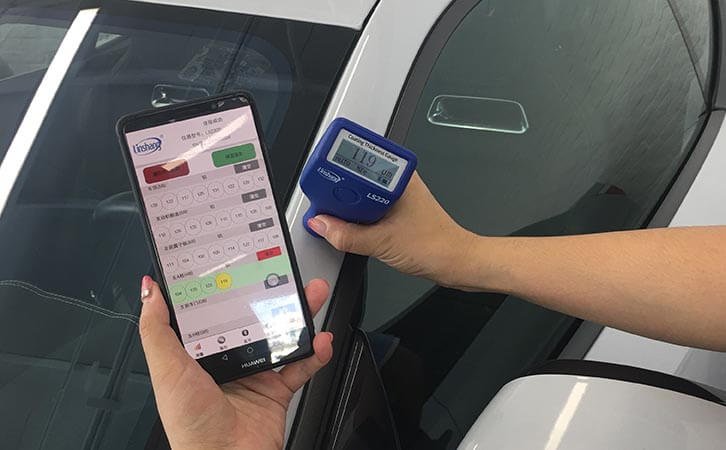Why Do We Use Car Paint Thickness Gauge to Test Paint Thickness?
In the past, steel was only used to make automotive exterior trim because it strikes a balance between cost, strength and workability. Now as automakers are looking for ways to reduce the weight of cars without sacrificing safety, aluminum is widely used as a new automotive profile. Both metals need to be painted for corrosion and aesthetic benefits. Only when the paint film thickness is controlled within the tolerance range specified by the car manufacturer, the paint film can exert the best product performance. Therefore, we need to use a car paint thickness gauge to measure the automotive paint thickness.
Closely related to paint thickness measurement is the repair and maintenance of automotive paint. The main purpose of paint treatment is to maintain the appearance of new cars or to repair damaged used cars.
First, the car repairer needs to remove dust and other loose pollutants in order to comprehensively check the current paint condition of the car. Simple cleaning and waxing do not eliminate paint damage on the car surface; polishing is usually done before waxing. Auto repairers remove the surface damage of the paint by polishing the top transparent coating of the car paint, such as scratches, oxidation, stains, excessive spray paint, tar, sap, acid rain or water stains. This polishing process is often referred to as fine processing. When paint damage is severe, multiple grinding and polishing are required to bring the paint closer to its original appearance. After the car surface paint is finely repaired, general people cannot observe the degree of damage to the car before repairing with the naked eye. Used car dealers often use car paint thickness gauges to show customers how their cars are being repaired. Through multiple measurements of different parts of the car, the condition of the car is demonstrated.
Due to the different measurement substrates, the paint film instrument is generally divided into three measurement principles.
Principle of magnetic induction measurement. The magnetic induction car paint thickness gauge is suitable for measuring non-magnetic coatings such as coatings and varnishes on ferromagnetic metal substrates such as steel. This kind of instrument can be used in places such as automobile doors and fenders.
Eddy current measurement principle. The eddy current car paint thickness gauge is suitable for measuring non-conductive coatings such as coatings and anodized layers on non-magnetic metal substrates such as copper, aluminum, and brass. This kind of instrument can be used in places such as the roof and hood of a car.
Ultrasonic measurement principle. The ultrasonic car paint thickness gauge is suitable for measuring the coating thickness based on plastics, such as automotive bumpers.
Linshang handheld non-destructive car paint thickness gauge is ideal for car manufacturers and used car dealers. This is an iron-aluminum dual-purpose instrument that uses both the magnetic induction principle and the eddy current principle. When measuring the car with Linshang car paint thickness gauge, the instrument can automatically switch the measurement mode according to different substrates. The LS220B car paint thickness gauge with Bluetooth can also be connected to a mobile phone APP, which can record the data of 17 positions of the car and each position can save 8 data, such as the door, front cover, left A-pillar, right B-pillar and so on. After completing the measurement, you can copy this report to a computer for printing, or save it to an album. Through the report, the overall situation of the car can be analyzed. For more details, please contact us!
- High precision coating thickness gauge for used car
- Automotive paint protection films coating thickness gauge
- Plating Thickness Measuring Instrument for Detecting Anti-corrosion Coating
- Linshang LS220, LS191, LS160A– Necessary for Car Cover Inspection
- Coating Thickness Gauge for Second Hand Vehicle
- Zero Adjustment Step of Coating Thickness Gauge
